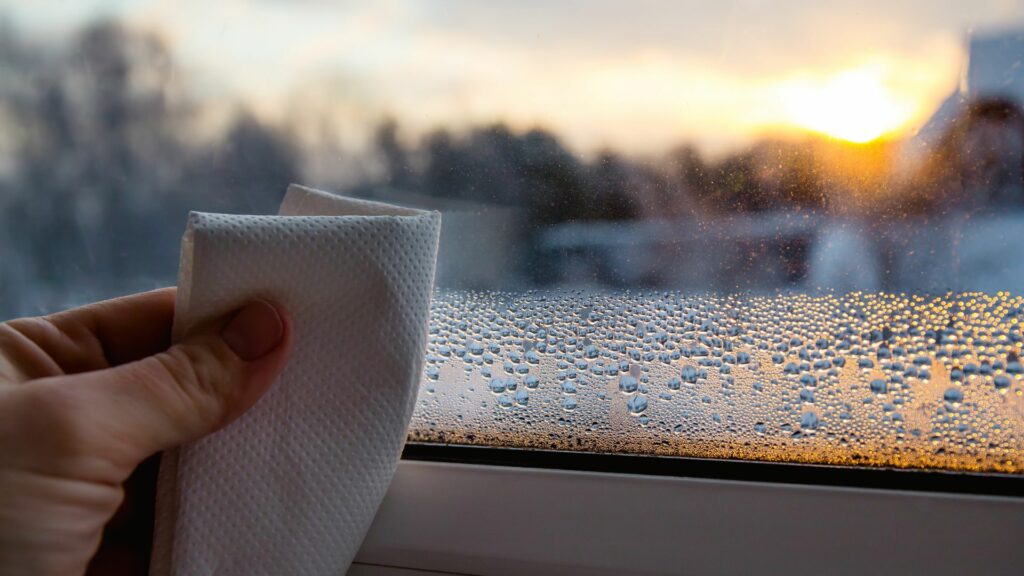The health impact of indoor humidity
As more people leave in urban areas, many of us now spend over 90% of our time indoors, making indoor air quality vital to our health and well-being. Among the various factors affecting indoor air quality, humidity levels play a crucial role in creating a comfortable, healthy living space. Here, we explore the ideal indoor humidity range, its effects on health and home maintenance, and practical steps for managing these levels effectively.

Understanding humidity and optimal Levels
Indoor humidity is the measure of moisture present in the air, typically expressed as a percentage. For comfort and health, experts recommend maintaining indoor humidity between 30% and 60%. This range helps prevent respiratory discomfort, structural damage to homes, and other issues that arise when humidity levels fall outside of this ideal range.
Effects of high indoor humidity
When indoor humidity levels rise above 60%, they create an environment prone to equally problematic issues:
- Excess humidity fosters the growth of mould, mildew, and dust mites, which can cause allergies, asthma, and other respiratory conditions. High moisture levels can also lead to headaches, fatigue, and irritation of the mucous membranes (e.g. in the nose, mouth, lungs) due to poor indoor air quality.
- Prolonged high humidity can lead to visible condensation on windows, peeling wallpaper, and warping of wood. These issues not only diminish the home’s aesthetic appeal but can also result in significant repair costs if not addressed early.
- Signs of high humidity include mould growth, often appearing in hidden areas such as behind walls, under sinks or in basements, window condensation, peeling wallpaper, and frequent respiratory symptoms.
Effects of low indoor humidity
Low humidity levels (below 30%) can lead to a range of health issues and maintenance concerns:
- Insufficient moisture in the air can result in respiratory issues, sore throats, dry eyes, and irritated skin, all of which are worsened for those with asthma or allergies. Dry air can also reduce the efficiency of our natural defences against colds and other illnesses by drying out mucous membranes.
- Low humidity can negatively affect the home’s physical structure, leading to cracking or warping of wood floors, and peeling or blistering paint. Additionally, static electricity may build up and cause annoying shocks or even disrupt sensitive electronics.
- Typical signs of low humidity include dry skin and hair, increased coughing or sore throats, nosebleeds, and the presence of static electricity.
How humidity affects mental well-being
Beyond physical health, humidity also has an impact on mental well-being. High humidity can cause discomfort and lethargy, leading to irritability and decreased productivity. Low humidity can create an uncomfortably dry atmosphere, which may lead to restlessness and even anxiety. Striking a balance in indoor humidity not only supports physical health but also fosters a positive and comfortable indoor environment that enhances mood and quality of life.
Managing indoor humidity
Controlling indoor humidity requires different approaches depending on whether levels are too low or too high. Here are several strategies for achieving optimal indoor humidity:
For high humidity:
- Dehumidifiers: These devices effectively reduce excess moisture, especially useful in damp areas or during the humid summer months.
- Ventilation: Improving ventilation in bathrooms, kitchens, and other moisture-prone areas helps prevent humidity build-up and the resulting issues like mould growth.
- Air conditioning: Air conditioning systems can also regulate indoor humidity by reducing both temperature and moisture levels.
- Air purifiers: Although they don’t directly remove moisture, air purifiers can improve air quality by filtering out allergens like mould spores, making the air feel fresher and cleaner.
In the UK we will typically not be dealing as often with low humidity. If you do suffer from this issue you could add more natural moisture sources such as potted plants or use a humidifier that add moisture to the air.
Seasonal adjustments
Changes in outdoor weather significantly affect indoor humidity. Ventilating your property is important in any season, but if for example the humidity outside is higher than inside (and you want to reduce humidity levels), you may want to wait until the outside humidity decreases or use a dehumidifier.
Maintaining indoor humidity between 30% and 60% is important for a healthy, comfortable living environment. With the right strategies— such as using humidifiers and dehumidifiers, improving ventilation, and seasonal adjustments—homeowners can manage indoor humidity levels effectively. By doing so, they support both physical well-being and the long-term maintenance of their homes.
With Propflo’s HomeHub, homeowners can stay ahead of indoor humidity issues through real-time insights and preventative measures. Our smart home technology integrates environmental sensors that track humidity, temperature, and carbon dioxide levels, giving you the data you need to optimise indoor air quality
Ready to improve your home's health?
About Propflo
Propflo is an award winning data-driven AI platform that supports lenders and property businesses to comply with energy efficiency regulations, meet their climate targets, and then support their customers in their wider ownership journey.
Propflo was founded by proptech entrepreneur Luke Loveridge and geospatial and risk data scientist Dr Daniel Moyo. It also has world leading AI expert Mike Tipping as an advisor.
www.linkedin.com/company/propflo
Contacts:
Felix Schraff
comms@propflo.co.uk
Press kit



